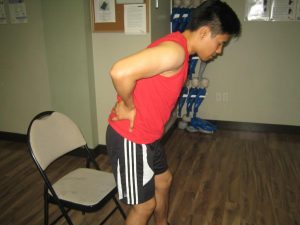A pinched nerve is a form of damage where a peripheral nerve or group of nerves are crushed due to disease or injury.
The impairment to the nerve might be brought about by either inflammation or crushing of the nerve and can occur either due to direct injury to the nerve itself or on the protective layer surrounding the nerve.
Indications
The signs of a pinched nerve often differ from strictly muscle-related injuries. The usual signs might include the following:
- Burning sensation
A pinched nerve can be caused by various injuries or health conditions that results to the compression of the nerves by the cartilage, bones, tendons or soft tissue. - Sensation of “pins and needles”
- Pain radiating outward from the site of injury
- Discomfort can be felt in an unrelated site such as pain in the arm or elbow due to a pinched nerve in the neck
- Sensation that the foot or hand has “fallen asleep”
- Bladder or bowel dysfunction
The pain linked with a pinched nerve can range from mild or severely intense.
Is it common?
A pinched nerve is considered as a common complaint that can affect individuals at some point in life.
The sciatic nerve is typically affected with results to low back pain. Some of the commonly compressed nerves include:
- Median nerve
- Ulnar nerve
- Radial nerve
- Plantar nerves
- Femoral nerve
- Lateral femoral cutaneous nerve
- Peroneal nerve
- Tibial nerve
- Sciatic nerve
- Cervical nerves
What are the causes?
A pinched nerve can be caused by various injuries or health conditions that results to the compression of the nerves by the cartilage, bones, tendons or soft tissue. Some of the usual risk factors include:
- Arthritis
- Degenerative joint disease
- Repetitive movements and overuse injury
- Burns
- Fractures
- Injuries to the back, neck or extremities
- Obesity
- Pregnancy
- Medical conditions such as diabetes and hypothyroidism
Management of a pinched nerve
The treatment for a pinched nerve is based on various factors including the site, possibility of complications and severity of the pain.
The commonly used options include:
- Adequate rest
- Corticosteroids – these can be used orally or as an injection to lessen the inflammation around the compressed nerve
- Pain medications – non-steroidal anti-inflammatory drugs (NSAIDs) are often given for pain relief. If the pain is severe, narcotics are used briefly.
- Physical therapy – used as initial treatment with pain management
- Medical devices or splints – a splint is used to limit motion around the affected nerve
- Traction
- Alternative therapies such as massage or acupuncture
- Surgery – this is an option which is required to either remove scar tissue which led to nerve compression
More Information / Disclaimer
The information posted on this page on a pinched nerve is for learning purposes only. Learn to recognize the signs and how it is managed by taking a standard first aid course with Ottawa First Aid.

